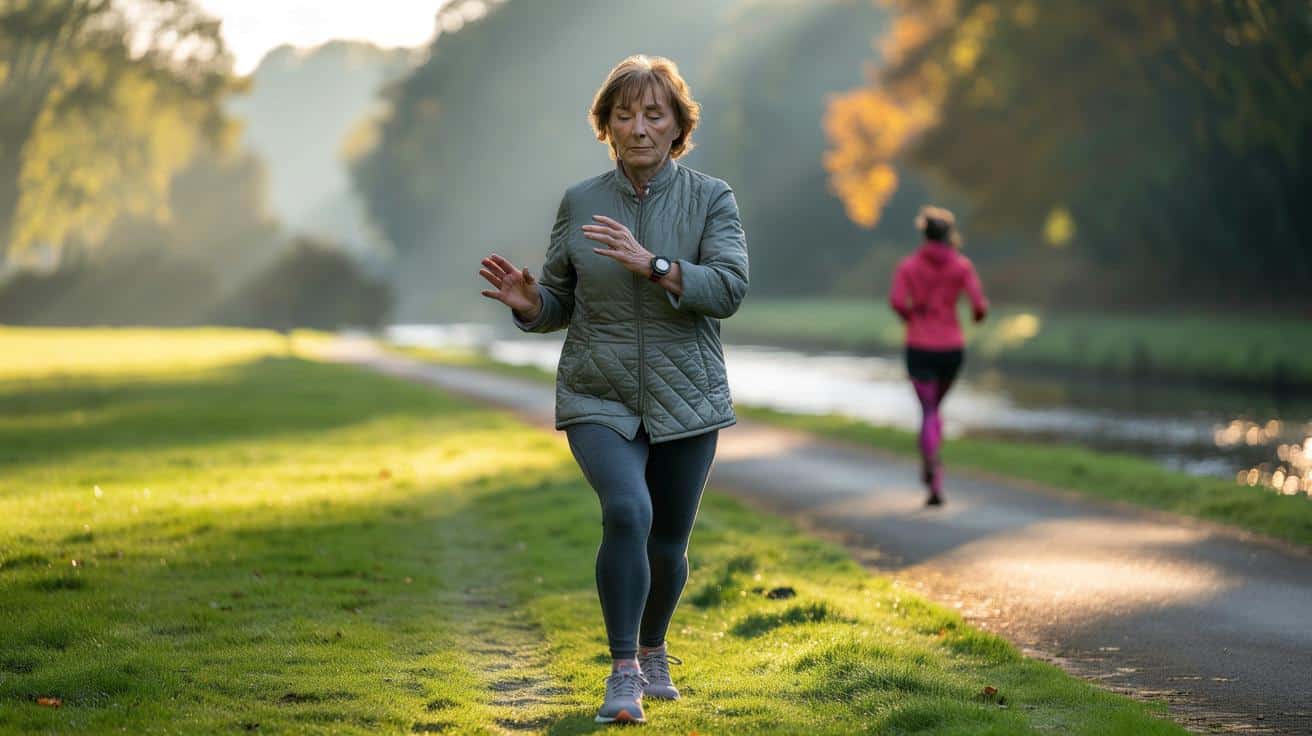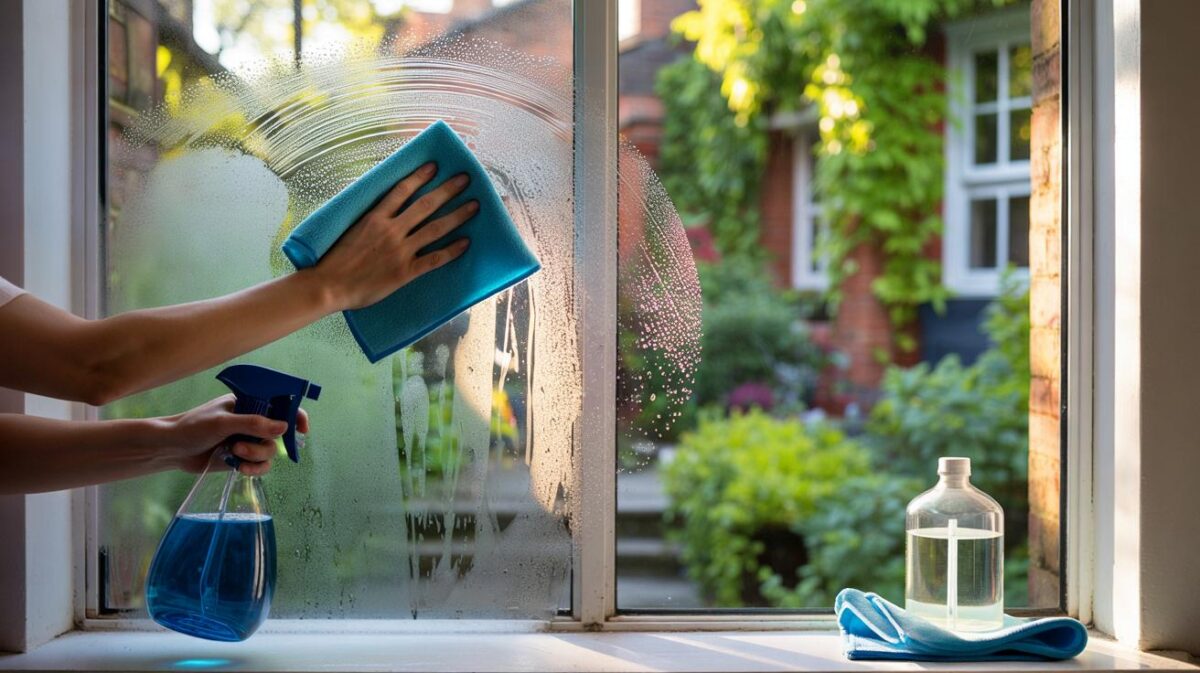Fifteen-minute tai chi sequences, a steady 9,000 steps most days, and a gentler rhythm that still claims results. Is this the crisp, midlife workaround we’ve been waiting for — the one that tones without chewing up your time or your knees?
It’s 8:12 a.m., the air crisp enough to make your lungs feel awake. On a patch of grass near the river, a woman in a neat quilted jacket sinks into a measured weight shift, palms floating forward like she’s moving through water. A runner flashes past, earbuds high, and for a beat the contrast is comic: thunder versus whisper. She isn’t chasing sweat; she’s chasing control. The quiet can be louder than the treadmill. We’ve all had that moment when the gym door feels heavier than the weights. Watching tai chi done well, you sense a different kind of effort — invisible, deep, stubborn. What if softness wins?
Slower moves, sharper muscle: the unexpected maths of tai chi and walking
At first glance, tai chi looks like resting with intent. Then you try it and your calves light up, your ankles work, your core tightens as if staging a polite protest. This is time under tension, minus the clang. The small stabilisers — hips, glutes, lower back — have to earn their keep, and that’s where “toned” starts to live. With 9,000 daily steps tipping you into steady-state movement, the body doesn’t spike, it accrues. It’s less fireworks, more pilot light. **Muscle wakes up when you ask it to stabilise.** Add the posture reset and breathwork, and the session leaves a trace that walking keeps alive through the day.
There’s solid scaffolding behind the calm. Randomised trials in older adults link tai chi to improved lower-limb strength, better balance, and fewer falls after 8–12 weeks. That matters at 66, when power leaks first through ankles and hips. Meanwhile, step-count research keeps landing on a similar sweet spot: about 7,000–10,000 steps correlates with lower mortality risk and better cardiometabolic markers compared with low movers. Nine thousand sits neatly in the “most days, not heroic” bracket. And toning isn’t just about lifting heavy; it’s about repeated, quality muscle recruitment. A slow “sit” into a tai chi stance is a stealth squat. A controlled push through the mid-foot is a calf raise hiding in plain sight.
Toning as we age is less about maxing out and more about matching the signal to the system. You want frequency, form, and variety in bite-size doses your joints don’t hate. Fifteen minutes of deliberate sequences can equal serious load when the tempo drops and the range improves. The steps top up circulation, keep fascia juicy, and nudge recovery. Think of it like compound interest: small, consistent deposits beat sporadic lump sums. **Consistency beats heroics.** If you crave extra “edge,” add a resistance band to a slow push or include two brief hill bursts in your walk. That’s the lift without the drama.
How to make 15 minutes count — and the walking do the rest
Start with a simple arc: feet hip-width, knees soft, spine tall like a string is lifting your crown. Shift weight to the right foot as the left heel floats, then reverse, keeping your breath slow and nose-led. Layer in a gentle “cloud hands” pattern — arms sweeping across the body, palms turning as if polishing air — while your hips guide the step. Two rounds of five minutes, then a short “horse stance” hold for 30–45 seconds with elbows drawn in. Finish with a slow roll down and up, stacking the spine like coins. Link this to two brisk 10-minute walks: one mid-morning, one late afternoon. The mix teaches your body to stay switched on between sessions, not just during them.
Common tripwires? Going too fast, locking the knees, and holding your breath when the legs start to shake. Let your eyes soften, so your neck stops gripping. Shorter stance beats wobbly deep stance. If a move feels pinchy, shrink the range and try a higher chair-height “sit” until your quads stop arguing. Let’s be honest: nobody actually does that every day. Aim for four days out of seven and you’ll feel the dial move. On walks, forget perfect pace; think “confident stride, arms free, chin level.” A 30-second hill or stairs burst midway can be your quiet accelerator.
Small cues help you cash in the minutes you do have. Keep the belly softly braced like you’re zipping trousers, exhale when you rise, inhale as you sink.
“Strong at 66 won’t look like strong at 26 — it will feel steadier.”
Try this simple structure when life gets busy:
- Five slow stance shifts after brushing your teeth.
- Two hill bursts during your walk.
- Ten calf raises while the kettle boils.
- One one-minute wall sit before lunch.
Sprinkle, don’t stack. Your joints will thank you, and your brain will too.
The bigger picture: toned as a feeling, not just a mirror
This gentler groove isn’t an anti-gym manifesto; it’s a recalibration. Toned at 66 might mean your legs catch you on a wobble, your back doesn’t nag at the supermarket, your jacket sits better across the shoulders. It might mean better sleep because breathwork downshifts you at night, or better mornings because walking gifts you daylight and rhythm. The aesthetic bit often follows when you’re occupied with how you move, not how you look. Try treating the day like a track: opening track (tai chi), mid-album lifts (walks), and a quiet outro. It’s workable, portable, and oddly joyful. If you want more muscle, add two short resistance snacks a week — bands, light dumbbells, a sturdy step. **The trick is wanting to repeat it tomorrow.** Share a lap with a friend, log your sequences, notice your ankles. The small wins pile up, quite fast, when you let them.
| Point clé | Détail | Intérêt pour le lecteur |
|---|---|---|
| Tai chi builds tone through control | Slow stances and weight shifts create time under tension for hips, legs, and core | Gain strength without joint flare-ups or long sessions |
| 9,000 steps keep the pilot light on | Regular walking maintains circulation, mobility, and gentle calorie burn | Easy, low-cost routine that fits daily life |
| Small habits compound | 15-minute sequences plus micro “strength snacks” twice a week | Progress you can feel in balance, posture, and energy |
FAQ :
- Is tai chi enough to keep you toned at 66?For many, yes — especially for balance, legs, and core control; adding brief resistance work accelerates changes in muscle shape.
- Are 9,000 steps a good daily target?It’s a sweet spot for health and energy for most people, sitting comfortably between low effort and overreach.
- Do I need weights if I’m doing tai chi?You can stay functional without them, but light bands or dumbbells twice a week will boost muscle definition and bone stimulus.
- How soon will I notice a difference?Balance and posture often shift in 2–4 weeks; visible tone can follow across 6–10 weeks with consistent practice.
- What if I have knee or back grumbles?Keep stances higher, ranges smaller, and move pain-free; a physio or GP can help tailor moves to you.









Love this framing of “pilot light” fitness. I’m 60 and 9k steps + 15 min tai chi feels doable, not punitive. Added a light band twice a week and my knees are quieter. Consistency beats heroics, indeed. Any beginner video you’d reccomend that matches this gentler tempo? Definately bookmarking. 🙂